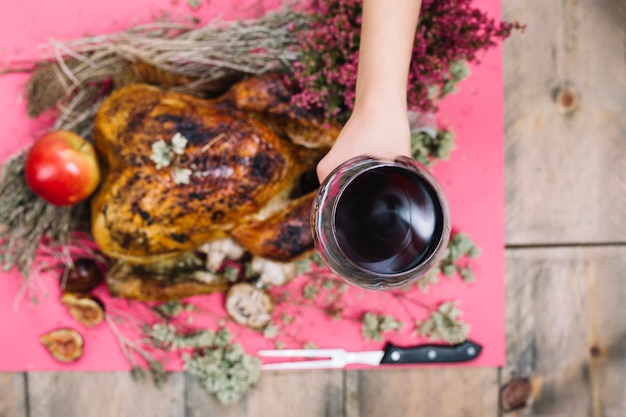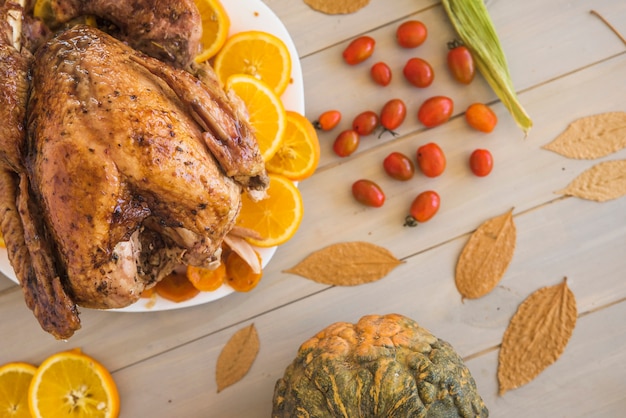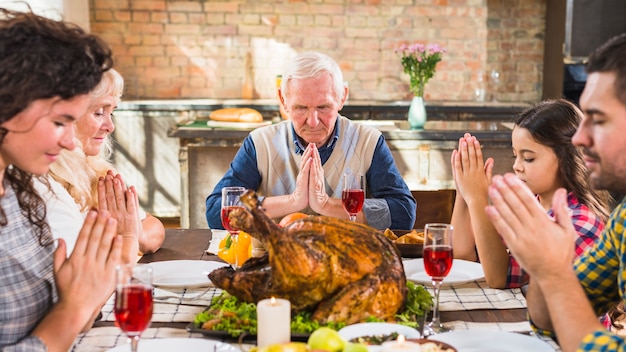Ah, the humble turkey. It's the star of the show for many festive gatherings, and rightfully so! There's something truly satisfying about carving a perfectly roasted bird, its skin glistening with golden-brown perfection, ready to be devoured by hungry guests. But let's be honest, knowing exactly how long to cook a 12-pound turkey can be a bit of a puzzle. It's not just about sticking it in the oven and hoping for the best. There's a science to it, a delicate dance between heat, time, and the bird's internal temperature. And that's where this ultimate roasting guide comes in. I'm going to share all the tips and tricks I've learned over the years, taking you through each step of the journey, from preparing the turkey to achieving that coveted golden crust and ensuring it's cooked to juicy, tender perfection. Grab your apron, grab a glass of something festive, and let's get started!
Part 1: Turkey Prep – Laying the Foundation for a Delicious Roast

As with any great culinary adventure, a successful turkey roast starts with a solid foundation. It's all about getting the bird prepped and ready for its star turn in the oven.
1. Thaw It Out – Patience is Key
First things first, if your turkey is frozen, you need to give it plenty of time to thaw out properly. I always recommend thawing it in the refrigerator – the slow and steady approach ensures the best results. For a 12-pound turkey, that means a good 2 days in the fridge, letting it thaw gently. You can also thaw it in a sink full of cold water, changing the water every 30 minutes. But keep it submerged and be sure it's completely thawed before you start cooking. Rushing the thawing process can lead to uneven cooking and potentially food safety concerns.
2. Pat It Dry – Achieving a crispy skin
Once thawed, give your turkey a good pat down with paper towels. This step might seem minor, but it's crucial! It helps remove excess moisture, ensuring that the skin gets nice and crispy when it’s in the oven. We all love that crispy skin, don't we? It's the best part!
3. Seasoning – Adding Flavor to Your Bird
This is where you can really get creative and add your own personal touch. I'm a simple guy, so I usually stick to a blend of salt, pepper, and garlic powder. But you can go wild! Try herbs de Provence for a classic French flavour, smoked paprika for a smoky kick, or even a bit of citrus zest for a zesty tang. Don't forget to season the cavity generously too.
3.1 Stuffing the Cavity – A Delicious Option (But Not Essential)
You can stuff the turkey with a simple onion, garlic, and herbs mixture, or get fancy with a bread-based stuffing. Just remember, if you're stuffing the turkey, make sure the stuffing is cooked to a safe internal temperature of 165°F (74°C) too. You can also cook the stuffing separately in a casserole dish for a safer option, and it can be equally delicious!
4. Trussing the Turkey – Keeping It Tight and Even
Now, trussing your turkey is a bit like a culinary hug. It helps to keep the turkey compact and ensures that the thighs and breasts cook evenly. There are loads of videos online showing different techniques, but I’ve always found the simple string method works best. You just tie a string around the legs and then criss-cross it over the breast area, tucking in the wings.
Part 2: The Oven – Setting the Stage for a Roast of Distinction

Alright, now that your turkey is prepped and ready, let's get the oven preheated. The oven is the star of the show, so let’s make sure it’s set for a good performance.
1. Preheat to Perfection – The Right Temperature for a Beautiful Bird
Your oven needs to be hot, hot, hot! Preheat it to 325°F (163°C). It's important to let the oven get good and hot before you put the turkey in. This helps to cook the turkey evenly and gives you that lovely golden-brown crust. Think of it like getting a good head start on the race.
2. The Roasting Rack – Elevating the Bird for Even Cooking
A roasting rack is a must-have for any turkey cook. It elevates the bird, allowing hot air to circulate all around. This helps the turkey cook more evenly and prevents the bottom from getting soggy. Imagine the rack as a platform for the turkey to shine!
3. The roasting pan – Catching All the Drippings for Delicious Gravy
Now, you'll need a roasting pan that's big enough to hold your turkey comfortably. I love using a roasting pan with a rack because it allows the juices to drain into the pan, which you can later use to make delicious gravy.
Part 3: Time for the Turkey – Roasting It Right

Ok, the stage is set, so let's get our turkey in the oven. This is where we really want to be precise.
1. How Long to Roast a 12-Pound Turkey? – A Guide to Time and Temperature
Here's the big question: how long do you cook a 12-pound turkey? Well, it takes roughly 3 to 4 hours, but there's more to it than just that. We need to consider the temperature of the bird, not just the time it's been in the oven.
Here's a general guideline for roasting a 12-pound turkey:
| Turkey Size (pounds) | roasting time (hours) |
|---|---|
| 10-12 | 3-4 |
| 12-14 | 4-5 |
| 14-16 | 5-6 |
Remember, these are just estimates. The actual cooking time will depend on factors like the oven's temperature, the turkey's shape, and its internal temperature.
2. Using a meat thermometer – The Key to Success
A meat thermometer is your best friend when roasting a turkey. It's the only way to be sure that the bird is cooked through and safe to eat. A turkey is considered cooked when it reaches an internal temperature of 165°F (74°C) in the thickest part of the thigh.
2.1 Why Temperature Matters
You might think that just roasting the turkey for the recommended time is enough, but it's not. Different turkeys cook at different rates, and only a meat thermometer can tell you for sure if the bird is fully cooked.
3. Basting the Turkey – Keeping It Moist and Delicious
Basting the turkey is an optional step, but it can help keep the bird moist and tender. I like to baste it every 30-45 minutes with the turkey's own pan juices. If you want to get fancy, you can also baste with butter or olive oil.
3.1 The Art of Basting
Basting is essentially a way of replenishing the moisture on the turkey's surface. You're essentially creating a delicious, golden-brown barrier that helps to lock in the juices.
Part 4: Resting the Turkey – Letting It Cool Down For a Juicy Reward
Now, once your turkey is cooked to perfection, you might be tempted to carve it right away. But hold your horses! It’s crucial to let the turkey rest for at least 15 minutes before you carve it. This allows the juices to redistribute throughout the meat, making it much juicier and tender.
4.1 Why Resting Matters
Think of it as giving the turkey a chance to relax after its long journey in the oven. The resting period allows the muscle fibers to relax, which results in a more tender and juicy final product.
Part 5: Carving the Turkey – A Festive Ceremony
After all that hard work, it's time to carve the turkey. This is the moment of truth, the moment we've all been waiting for!
1. The Tools of the Trade – Essential Equipment for a Clean Carve
You'll need a sharp carving knife and a carving fork. You can also use a cutting board, but I like to carve the turkey straight onto a platter for a more dramatic presentation.
2. Carving with Precision – The Art of the Carve
Start by removing the legs and thighs. Cut along the joint, separating the leg from the breast. Then carve the breast meat into slices. You can also remove the wings. Just be careful not to shred the meat as you carve.
2.1 Carving Tips
Use a sawing motion with the knife, keeping it as close to the bone as possible.
Part 6: Serving the Turkey – A Feast for the Senses
Finally, it's time to serve up the fruits of your labour!
1. Creating a Delicious Spread – The Perfect Accompaniments
Serve the turkey with your favourite side dishes. Roasted potatoes, mashed potatoes, stuffing, gravy, cranberry sauce, and vegetables are all classic accompaniments.
2. Presentation is Key – Adding a Touch of Elegance
A beautifully presented table adds to the festive atmosphere. Use a platter that's large enough to hold the turkey and the carving knife. Add some greenery or festive decorations for a touch of elegance.
Part 7: Leftovers – The Best Part!
We all know what the best part of a turkey roast is: the leftovers! There's something about turkey sandwiches the day after that just hits the spot.
1. Leftover turkey recipes – Getting Creative with Your Leftovers
You can get creative with your leftovers! You can use it in soups, stews, salads, or even pasta dishes.
2. Freezing Leftovers – Saving for Later
If you have more leftovers than you can eat in a couple of days, you can freeze them for later. Just make sure to store them in airtight containers or freezer bags. frozen turkey can last up to 3 months.
Part 8: FAQs – Answering Your Questions
Now, let's tackle some common questions that you might have about roasting a 12-pound turkey.
1. How do I know if my turkey is cooked through?
The best way to know if your turkey is cooked through is to use a meat thermometer. Stick it into the thickest part of the thigh, making sure not to touch the bone. If the temperature reaches 165°F (74°C), your turkey is done.
2. What if my turkey is not cooked through?
If your turkey is not cooked through, you can continue roasting it until it reaches the desired temperature. Just make sure to check the temperature every 15-20 minutes.
3. How long can I keep cooked turkey in the fridge?
You can keep cooked turkey in the fridge for up to 3-4 days. Just make sure to store it in an airtight container or wrap it tightly in plastic wrap.
4. What if my turkey is too dry?
If your turkey is too dry, there's not much you can do about it once it's cooked. But you can prevent it from drying out in the first place by basting it regularly and making sure you don't overcook it.
5. How do I make gravy from the turkey drippings?
Making gravy is easy! Simply strain the turkey drippings into a saucepan. Add a tablespoon or two of butter or oil, then add a couple of tablespoons of flour. Stir the mixture over medium heat until it forms a smooth paste. Gradually whisk in the turkey broth or stock, stirring constantly. Bring the gravy to a simmer, then season to taste with salt, pepper, and any other herbs or spices you like.
Part 9: Final Thoughts – roasting turkey, a culinary journey
Well, there you have it! A complete guide to roasting a 12-pound turkey. From prepping to carving and even leftover tips, I've tried to cover everything you need to know to make your turkey roast a success. Remember, it's all about taking your time, being patient, and enjoying the process. After all, roasting a turkey isn't just about creating a delicious meal, it's about creating memories and traditions that last a lifetime. So, put on your apron, crank up the oven, and get ready to impress your family and friends with a truly delicious turkey roast. Happy cooking!
Everyone is watching

Perfect Rice Every Time: The Ultimate Guide to Cooking Rice
Cooking TipsAs a self-proclaimed foodie, I've always been a bit obsessed with rice. It's the foundation of countless cuisi...

The Ultimate Guide to Cooking Asparagus: Tips, Techniques, and Recipes
Cooking TipsAsparagus. The mere mention of this spring delicacy conjures up images of vibrant green spears, crisp and burs...

Ultimate Guide to Cooking the Perfect Thanksgiving Turkey
Cooking TipsThanksgiving. Just the word conjures up images of overflowing tables laden with delicious food, the scent of r...

Prime Rib Roast Cooking Time Chart: Per Pound Guide
Cooking TipsPrime rib roast. Just the name conjures images of lavish dinners, crackling fires, and hearty laughter. It’s ...

Can You Cook Spaghetti with Gasoline? (The Shocking Truth)
Cooking TipsWe've all seen those crazy internet trends. You know, the ones that make you wonder, "Did someone actually try...
